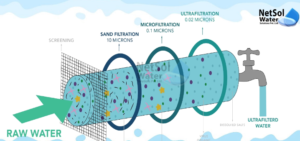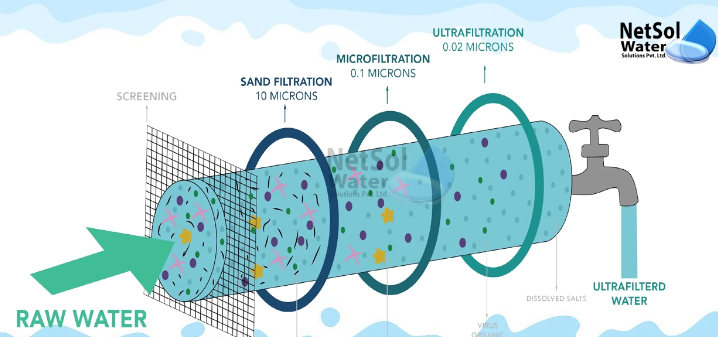Revolutionizing Water Purification Through Membrane Technology: A New Era in Clean Water Access
Access to clean water is one of the most pressing challenges facing the world today. With growing populations, climate change, and pollution compromising freshwater resources, innovative solutions are needed to ensure safe, reliable water supplies for all. One such groundbreaking solution is membrane technology, a versatile and effective method for water purification that is transforming the way we approach water treatment. This article explores how membrane technology is revolutionizing water purification and providing sustainable solutions to the global water crisis.
What Is Membrane Technology in Water Purification?
Membrane technology is a filtration process that uses semi-permeable membranes to separate contaminants from water. These membranes allow water molecules to pass through while blocking larger particles, impurities, and microorganisms. Membrane filtration can be used in various applications, from industrial water treatment to household filtration systems.
There are different types of membrane processes, including:
- Reverse Osmosis (RO): Water is pushed through a semipermeable membrane that filters out salts, chemicals, and impurities.
- Ultrafiltration (UF): This method removes bacteria, viruses, and larger particles, offering a higher flow rate than reverse osmosis.
- Nanofiltration (NF): It operates between reverse osmosis and ultrafiltration, targeting smaller ions and molecules like softening water.
- Microfiltration (MF): The least fine filtration, microfiltration eliminates larger particles like dirt, sand, and bacteria.
The Advantages of Membrane Technology in Water Purification
Membrane technology offers several advantages over traditional water treatment methods, including:
- High Efficiency and Precision
Membranes can selectively filter contaminants, ensuring that only purified water passes through. This precision allows for high-quality water output while minimizing waste. - Energy Efficiency
Compared to other purification methods, membrane-based systems often require less energy, especially when combined with energy recovery technologies in processes like reverse osmosis. - Scalability
Membrane filtration systems can be scaled up or down to meet the needs of various applications. Whether it’s a small-scale residential filtration unit or a large-scale municipal water treatment facility, membrane technology can be adapted to fit the size and scope of the water purification project. - Compact Design and Flexibility
Membrane-based systems are often compact and can be deployed in a variety of settings. This makes them suitable for both urban and rural areas, offering a flexible solution to water purification challenges. - Lower Environmental Impact
Membrane systems often generate less waste than other water purification technologies, contributing to more sustainable water management practices.
Membrane Technology in Action: Applications in Water Treatment
Membrane technology has a wide range of applications in water purification, from large-scale municipal treatment plants to portable devices for individual use.
1. Desalination: Turning Seawater into Fresh Water
One of the most significant uses of membrane technology is in desalination, where seawater is converted into freshwater for human consumption and agriculture. Reverse osmosis is particularly effective in desalination due to its ability to remove salt and other contaminants from seawater.
- Impact: Desalination is especially important in arid regions and islands where freshwater sources are limited. The increasing demand for freshwater, coupled with advances in membrane technology, is making desalination more cost-effective and accessible.
2. Industrial Water Treatment
Many industries, such as food processing, pharmaceuticals, and chemicals, rely on membrane technology for efficient water purification. Ultrafiltration and nanofiltration are commonly used to remove impurities and contaminants from wastewater before it is reused or discharged.
- Impact: By improving water quality and enabling water recycling, membrane technology helps industries reduce their environmental footprint and conserve valuable water resources.
3. Household Water Filtration Systems
On a smaller scale, membrane-based systems are increasingly being used in household water filtration devices. Reverse osmosis systems are commonly found in home water purifiers, where they provide safe drinking water by removing chlorine, heavy metals, and other harmful substances.
- Impact: For individuals, membrane technology offers an affordable and reliable way to ensure access to clean, safe drinking water.
4. Emergency and Portable Water Purification
Membrane technology is also used in portable water filtration devices, which are vital in disaster-stricken areas or outdoor activities like hiking and camping. These portable systems utilize ultrafiltration or microfiltration to provide clean drinking water in remote locations.
- Impact: Portable water purifiers are crucial for humanitarian aid, providing immediate access to safe water in emergency situations.
Advancements in Membrane Technology: The Future of Water Purification
While membrane technology has already had a profound impact on water purification, ongoing research and development are pushing the boundaries of what’s possible. Several innovations are improving the efficiency, affordability, and sustainability of membrane filtration systems.
1. Development of More Durable Membranes
One of the main challenges in membrane technology is membrane fouling, where contaminants accumulate on the surface of the membrane, reducing its efficiency. New advancements are focused on developing more durable and fouling-resistant membranes to extend their lifespan and reduce maintenance costs.
- Example: Hydrophilic coatings and surface modifications are being explored to prevent fouling, making membranes more effective and longer-lasting.
2. Improved Energy Efficiency
Energy consumption is a significant consideration in large-scale membrane systems, particularly in desalination. Research into energy-efficient pumps, pressure exchangers, and hybrid systems is reducing the energy requirements of membrane filtration, making it more affordable and sustainable.
- Example: Pressure-retarded osmosis (PRO) and other energy recovery techniques are being integrated into desalination systems to reduce energy costs.
3. Cost Reduction through Innovation
One of the barriers to widespread adoption of membrane technology is the cost of the equipment and operation. However, as membrane materials improve and manufacturing processes become more efficient, the cost of membrane filtration systems is expected to decrease.
- Example: Advances in materials like graphene-based membranes hold promise for producing highly efficient and cost-effective filtration systems.
4. Smart Membranes and IoT Integration
With the advent of the Internet of Things (IoT), researchers are integrating sensors and real-time data monitoring into membrane filtration systems. Smart membranes can monitor water quality, detect fouling, and predict when maintenance is required, improving system efficiency and reducing downtime.
- Example: IoT-enabled membranes in industrial and municipal systems can provide real-time data to operators, allowing for better decision-making and optimized performance.
Conclusion: A Sustainable Solution for Global Water Challenges
Membrane technology is leading the charge in addressing the global water crisis by providing efficient, scalable, and sustainable solutions for water purification. From desalination to household water filtration, membrane technology is revolutionizing the way we clean and manage water resources.
As technological advancements continue to improve the efficiency, cost-effectiveness, and durability of membrane systems, the future of water purification looks promising. With its ability to provide clean, safe water to millions of people around the world, membrane technology is not just a solution to today’s challenges—it’s a pathway to a more sustainable and water-secure future.

Also Read :
- Drone Technology in Disaster Management and Rescue Operations
- The Role of Nanotechnology in Revolutionizing Material Science
- Advances in MRI Technology: What’s Next for Medical Imaging?
- How MRI Technology is Transforming Medical Diagnostics
- The Role of Blockchain Technology in South Africa’s Fintech Industry
